Worm composting, also known as vermiculture or vermicomposting, produces amazing and nutritious compost every 3-6 months.
Worm composting is perfect for those with limited space, or if you don’t have a yard, as they can be kept indoors or on a balcony.
There are a number of worm composter options out there, so it can be difficult to decides what’s good and bad, useful or not. For those in a hurry, here is a quick summary of options:
- Best Overall Worm Composter – The Worm Factory 360 Composting Bin
- Best Indoor Worm Composter – VermiHut Plus 5-Tray Worm Composting Bin
- Best Outdoor Worm Composter – SUBPOD Compost Bin Outdoor
- Best No-Mess Worm Composter – Urban Worm Bag Worm Composting Bin
- Best Value for Money Worm Composter – Quest Store 4-Tray Worm Compost Kit
- Best Luxury Worm Composter – Brothers Worm Farm Compost Bin
In this article, I will take you through the best worm composters first and then a buying guide the variety of features that you should consider. It will help you when choosing the best worm farm kit for you.
Traditional Open-Air Compost Pile vs Worm Composter
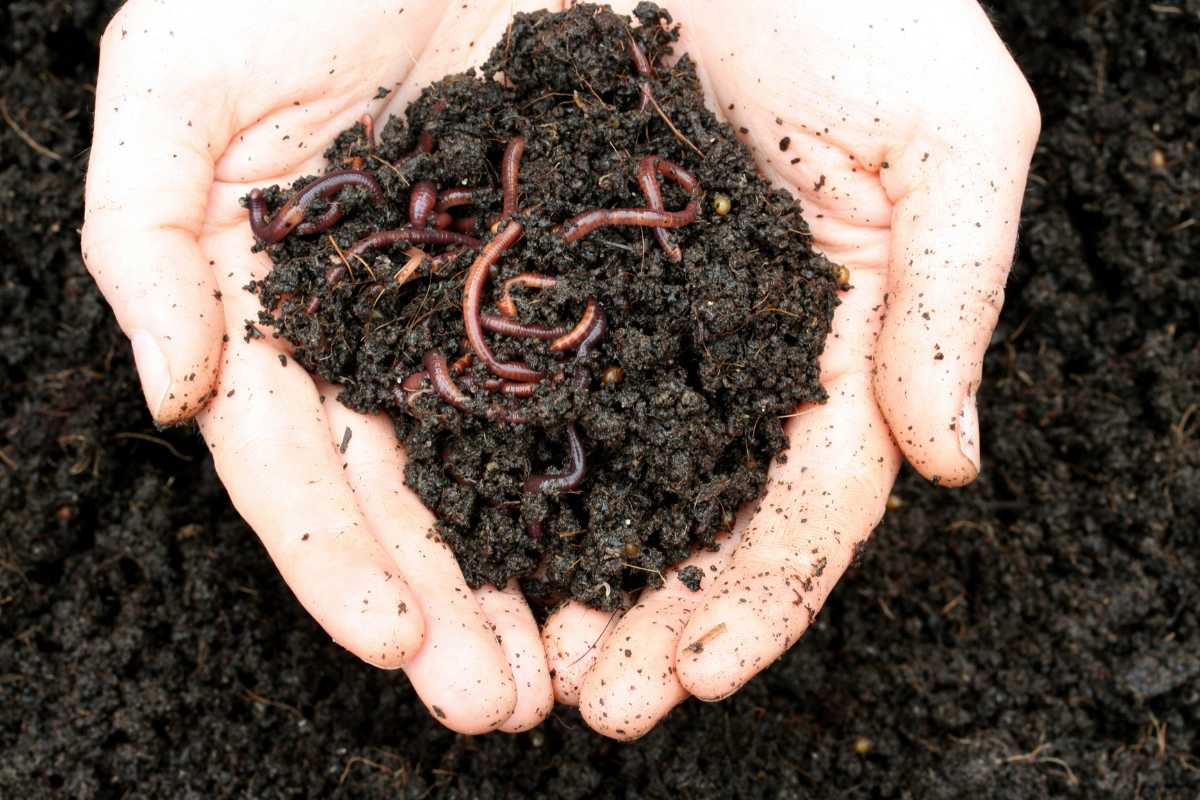
Worms are an essential part of open-air composting, and every gardener worth her salt wants to attract worms to their compost pile.
The main difference between traditional composting and using a worm composter is that many other insects and microbes break down the material to make compost in conventional methods. Vermicomposting produces worm castings (worm poop) which can be used similarly as compost.
A worm composter keeps worms enclosed and relies on you feeding them regularly on food scraps. Worms can also be given a small amount of cardboard and paper. That brown material is essential to soak up any excess moisture and keep your worms happy.
Many people enjoy keeping worms, and they can be great fun for young kids as well as being educational. Vermicomposting is a type of composting that can be a fun family activity.
Let’s take a look at the best worm composters and worm compost kits out there now.
Best Worm Composters
1. Best Overall Worm Composter – The Worm Factory 360 Composting Bin
The Worm Factory 360 Composting Bin by The Squirm Firm can be used indoors or outdoors. Although, when placed outside, it must be protected from the rain, direct sun, or extreme cold.
It comes with four trays as standard, but its stackable design allows it to be expanded to eight trays for a bigger capacity. Extra trays can be purchased easily online at Amazon.
This worm composting bin is easy to use and assemble, and comes with a useful refrigerator magnet that details what foods you can add to the bin and which ones to avoid.
It can sometimes be confusing what compost materials to add to the compost bin, but the magnet helps let you know what vegetable waste and other food scraps are good or bad.
Simply add your worms and compostable waste to the bottom tray to use this system. You can then add more trays of kitchen waste to the top. The worms will migrate up to the new food waste, leaving the worm castings in the bottom tray for you to collect and use.
The worm composting process can take several months, and it is recommended that you wait around thirty days before adding a second tray. Each tray can hold around 4 gallons of compost material – which by my estimate, would equate to about 8KG.
The capacity of the composter is pretty good and should suit any family size when you consider you can add extra trays for more finished compost.
This Worm Factory 360 worm composter system is low-maintenance, clean, and easy to manage. If you are serious about worm composting, this worm bin system is worth the price tag.
2. Best Indoor Worm Composter – VermiHut Plus 5-Tray Worm Composting Bin
While the VermiHut 5-Tray Worm Compost Bin can be kept outdoors, it is better suited indoors. The composter comes with five stackable trays, but extra trays can be added.
This composter works in the same way as number one on our list, but it is not as expensive. These worm composters are fascinating for young kids. As well as the fun of seeing the happy worms, they can also get a valuable lesson in biodegradability. Seeing their vegetable peelings become dirt will definitely appeal to a kid’s curiosity.
It has coconut fiber built into the air-vented lid for odor prevention, making it perfect for indoor use.
This hefty 5-tray composter can house a maximum of 10lbs of worms and go through 5lbs of food scraps per day, meaning in ideal conditions, you could get up to 68KG of quality worm castings per month.
3. Best Outdoor Worm Composter – SUBPOD Compost Bin Outdoor
The SUBPOD worm composter is designed to let the worms come and go as they please. A large portion of the composter is dug into the ground. It’s a container with holes in the sides of the unit that allows the worms to be free-range.
It can compost up to 15KG of food waste a week and is suitable for a household of up to six people. While all the worm composter bins on this list are low maintenance, this one only requires five minutes of your time a week.
As an outdoor composter, this does away with the stacked tray system and acts as a regular composter for compost removal. The Subpod has two sections, so you can fill one side and wait until it has all decomposed to remove the compost, while filling the other section with fresh organic material.
You can add kitchen scraps to the top and give the pile a stir once a week. It can also double as a garden seat, so it can look attractive even in a small yard, and there is no need to hide it away.
A smaller version is available too, but the smaller version only holds about 9.9 KG of food waste. It is suitable for households up to 4 people.
While this is still mainly designed for food scraps, you would be able to add a small amount of garden waste, such as weeds and clippings. For this reason, I have put the larger model on the list as you would have more room for grass cuttings and leaves in the fall.
4. Best No-Mess Worm Composter – Urban Worm Bag Worm Composting Bin
The Urban Worm Bag composter does away with the usual stacked tray system, while still being easy to use. The revised design means it is easy to add waste and remove the worm castings.
Simply unzip the top to add organic materials and unzip the bottom to access the castings. It has a drawstring at the bottom to keep the bulk of the material in, so only the castings will come out when you unzip the bottom.
This design works on the principle that the worms will stay in the top 6-8 inches of their habitat, so there should not be any worms in the finished compost when you harvest from the bottom.
This composter is better for indoor use, but you can use it outside if you have an outdoor space that is not exposed to the elements. Whilst it’s not the most attractive composter on the list, you should go for this if you don’t fancy the mess of replacing and cleaning trays.
This worm composter can hold up to 8 pounds of worms, and at maximum capacity, can produce 63lbs of worm castings per month. This volume is comparable with most of the other systems, although the tray systems can be expanded if you need more space.
5. Best Value for Money Worm Composter – Quest Store 4-Tray Worm Compost Kit
The Quest Store Worm Compost Bin is a simple four-tray worm composter that does the same as the other tray composters, but without the bells and whistles.
It is considerably cheaper than the others on the list, so it’s the best if you just want to dabble in worm composting without committing to a large price tag.
This unit is a lot smaller than the other tray systems on the list, but any faults can be forgiven due to the product’s value. If you want to compost a large amount of food scraps and harvest plenty of castings, then this composter isn’t for you.
If you’re going to use this as an experiment before you go big, or you want just to demonstrate composting to your kids, then this is the one for you.
6. Best Luxury Worm Composter – Brothers Worm Farm Compost Bin
If you’re looking for style from your indoor worm composter, then look no further than the Brothers Worm Compost Bin.
This Urbalive Worm Farm has the standard tray system, but your visitors will be none the wiser that there are worms inside!
Winner of the RedDot Design Award, this worm composter will look great in even the most minimalist kitchen. What’s more, it is an excellent worm composter too!
This compost is the most expensive tray composter on the list, at roughly the same cost as the largest outdoor model. However, it can’t be denied that this is the best looking.
Fashionable and functional, the sleek design makes it stand out from the others on the list.
This composter can also be used outside, provided it is protected from the elements. The only thing that lets this unit down is the capacity.
It only comes with two trays as standard, but extra trays can be purchased to extend it to four. This item is probably best suited for a small household that wants a bit of fresh compost to add to their houseplants.
How to Choose a Worm Composter – Buying Guide
If you are considering buying a worm composter, I hope the list above has helped somewhat. However, there are plenty of other worm composters on the market, as well as other types of composters.
If you are still in the dark about what worm composter to buy, the list below will help you determine how to choose the worm composter that is right for you.
Here are the top five things to consider when looking for a worm composter.
1. How much will you compost?
This question is the main thing you need to consider when selecting a worm composter. If you have a lot of waste, including garden waste, then buying a small indoor composter really won’t be of use to you.
Worm composters can only really be used for food waste, some paper, and small pieces of cardboard. You can use a worm composter in conjunction with a regular open-air composter for your garden waste. But, as food waste can also be added to a traditional composter, you might be making more work for yourself.
The capacity of most worm composters is plenty for a large family to compost food waste and some paper or cardboard.
If you’re unsure how much waste you will produce, you can always go with a system that has the option to increase the capacity should you need it. Stackable systems can usually double its capacity with extra trays.
2. How much space do you have?
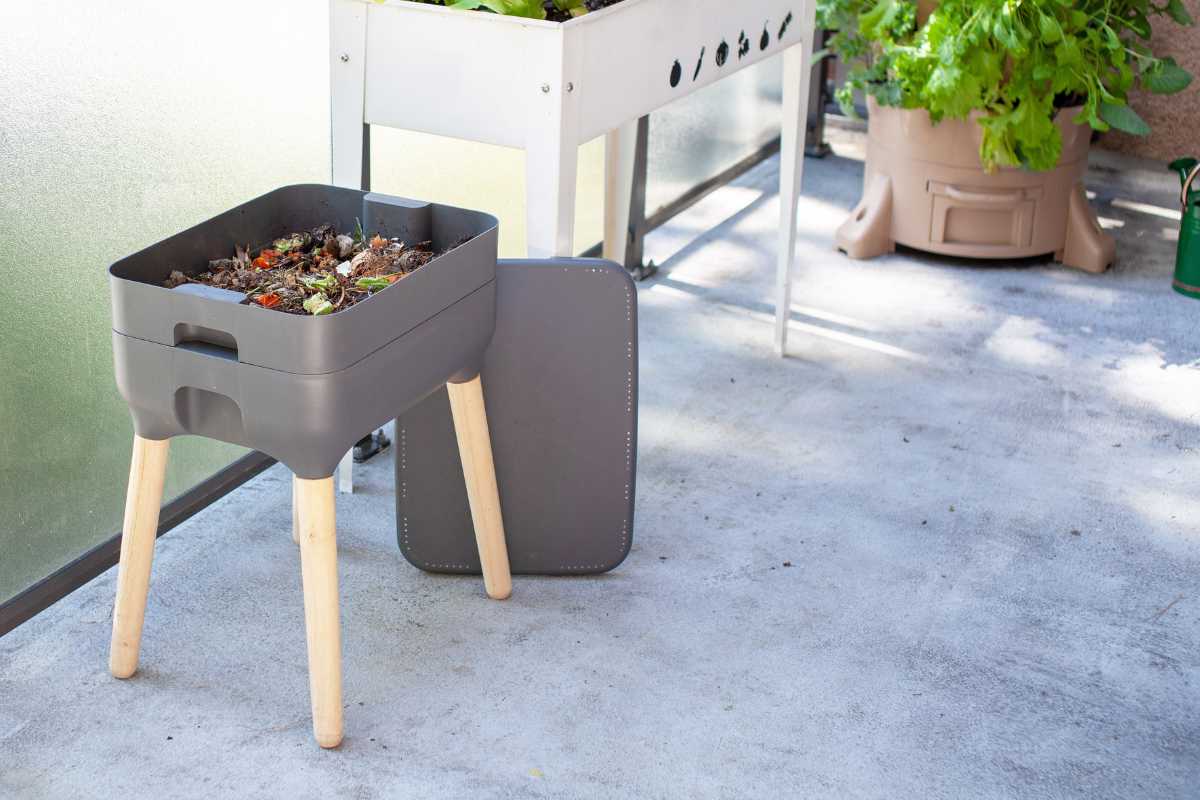
These composters can take up space and need to be kept sheltered if you’re keeping them outside. Remember that these composters house living beings, so if you don’t keep them in the right conditions, you will end up with a lot of dead worms on your hands!
If you don’t have a yard and want to compost, then an indoor worm composter is perfect. Indoor worm composters have a stackable tray design, so it’ll only use up vertical space if you decide to expand.
The amount of finished compost you produce will be perfect for repotting houseplants and window boxes. You also won’t have to worry about your system being too small for garden waste.
When choosing your composter, always look at the unit’s dimensions and check the space where you want to put it.
I recommend placing a box of a similar size in the area, so you know for sure that you can live with it. You don’t want to spend money on something that you’re going to hit your shin on daily!
3. What is your budget?
The budget question is always a big one. If you are uncertain whether worm composting is for you, you won’t want to spend hundreds of dollars finding out.
If you only have a small budget or want to try it out before committing, then it’s best to stick to a low-budget version.
However, if you are serious about getting into worm composting for the long run, then investing in a premium model would be the way to go.
Going for a low-cost option may be a false economy in the long run as the capacity is usually too small for any serious composting. If you have a limited budget, you could always consider buying second-hand too. Most worm compost bins are made of durable materials, so they will last for many years.
4. How squeamish are you?
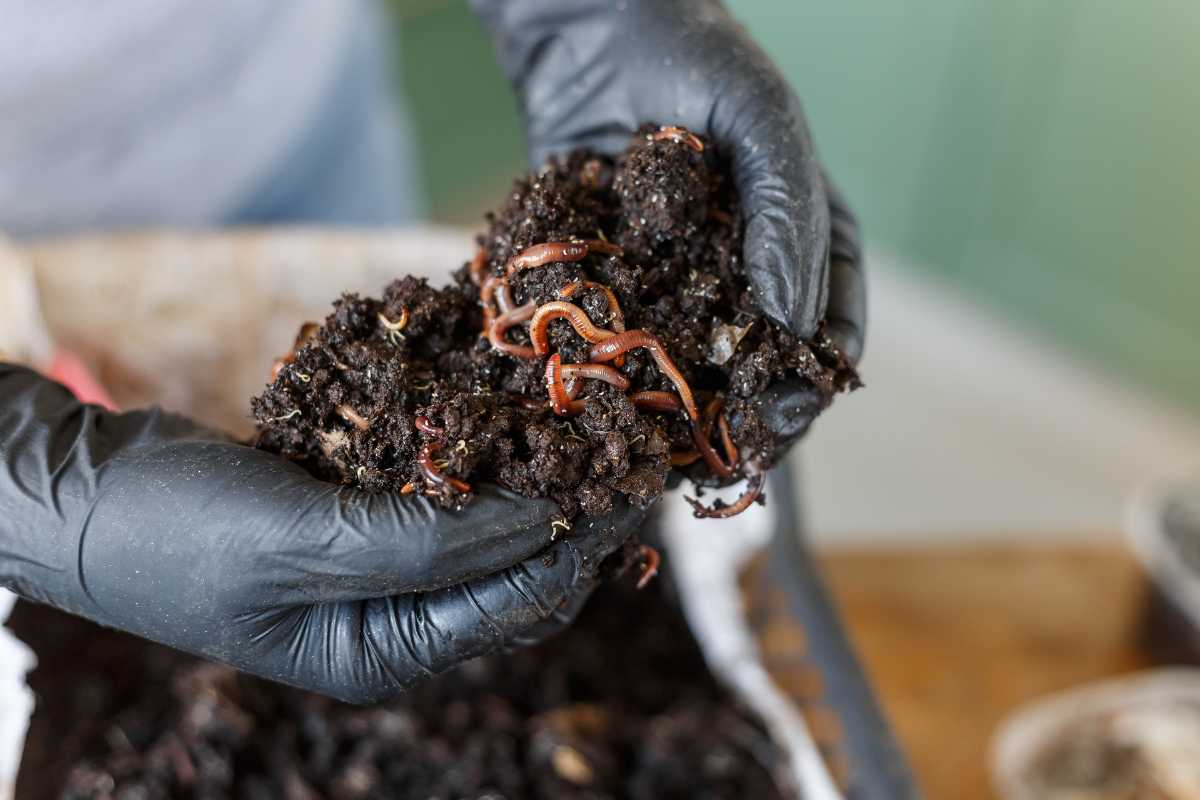
Worm composting will mean that you will have to handle a few worms. Even with the easiest indoor system, you might still encounter a worm or two.
Also, even though it is odorless, indoor systems mean you will be making compost in your kitchen, so you’ll have to be comfortable handling dirt.
Outdoor composting systems are better if you like keeping your gardening outside!
Indoor systems can get dirty, so if you are adverse to a mess (and you have outdoor space), then an outdoor system is for you.
Learn more about the Best Worms for Composting, so you can get an idea of the worms that you can use.
5. How important is aesthetics to you?
I’ll be honest, when it comes to design and style, most of the worm composters on this list are not much to look at. In fact, some of them are downright ugly.
How the worm compost bin looks may not be an issue to you, since you’re just going to be filling it with worms and their poop anyway.
But if you want a worm composter that fits in with the design of your kitchen then you need to take that into consideration.
Let’s also take a look at the various components of a worm bin and how they affect a worm farm.
Worm Compost Bin Features
Take a closer look at the features and components of a worm bin to help you when choosing a worm composter to buy.
Types of Worm Bins
Worm bins come in two basic styles: tray and flow-through. Both can be used inside or outside, but there are some advantages and disadvantages to each style.
1. Tray Worm Bin
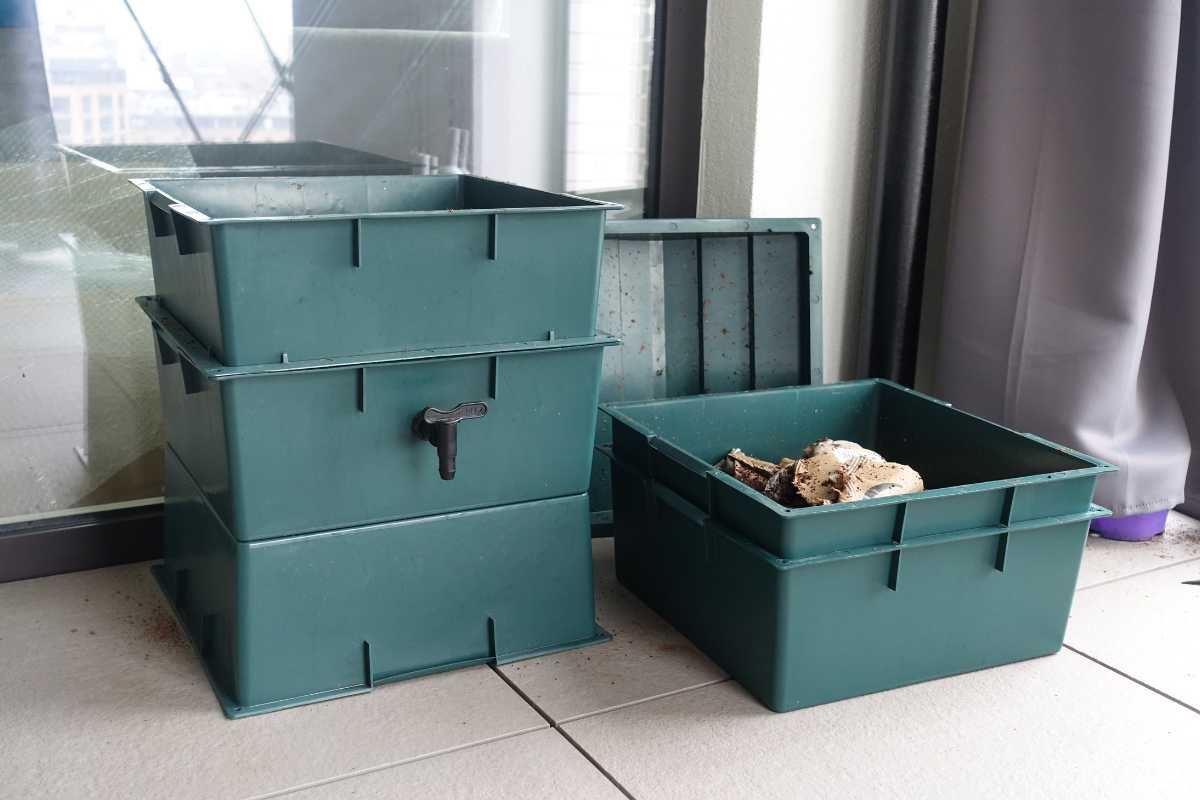
The tray bin system is a stackable bin design that makes worm composting easy. It has a removable lid, which means you can empty the contents without having to lift the whole thing off the ground.
The tray type of worm bin is great for beginners because it’s simple to set up and maintain. Worms will migrate upward into the next tray above when it’s finished composting the materials on its current tray.
You then place a fresh layer of bedding and food onto the tray below. The worms move up again, creating more finished compost. Finally, you remove the lower tray, allowing the worms to finish migrating to the next section. You can then harvest the castings easily because they’re all in the bottom tray.
2. Flow-Through Worm Bin
A flow-through system is similar to a tray system, except that the worms move around freely instead of being confined to trays. They’re free to roam from one section to another, mixing the material and creating a rich, nutrient-rich compost.
Because the worms are moving around freely, you won’t have to worry about them building up in one area. This allows you to add new ingredients to the top of the pile without disturbing the existing worms.
Harvesting the worm castings requires opening the bottom of the container and digging them out. Because the castings aren’t easily found on trays, there may be some mess involved. But at least you won’t have to worry about removing trays.
Leachate Collection Method
Worm tea, Leachate, is a liquid byproduct of worm composting, so worm bins need a way to deal with the liquid.
If you have a plastic container that’s not breathable, the moisture created from composting can’t escape, so you may have more leachate than expected.
Here are the 3 main ways to deal with the excess leachate.
1. Spigot
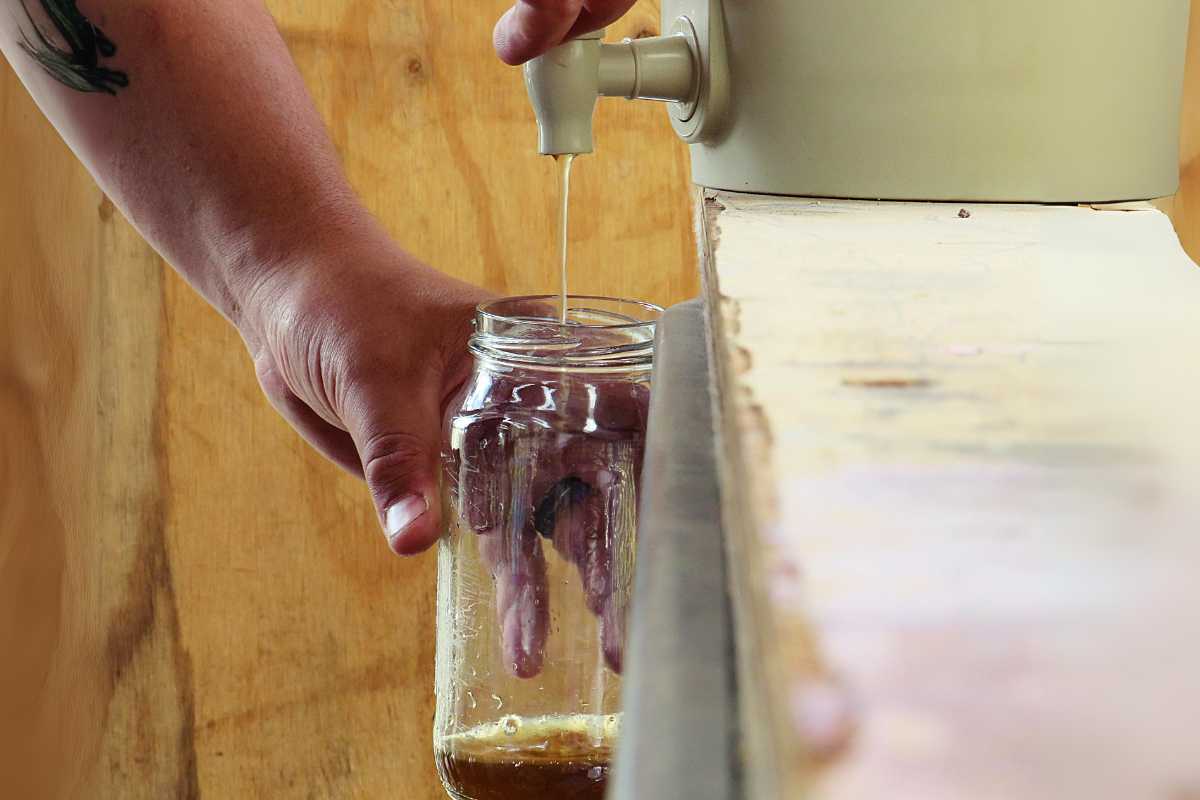
A spigot is basically a tap that you can turn on to let out leachate from the bottom of the bin. Spigots are used to make sure liquids stay inside containers until you want them drained.
Worm bins should be checked periodically for clogged worms or other debris. Regularly checking the spigots will help prevent any buildup of waste material that could cause a backup.
2. Open Drain
An open drain uses gravity to help drain excess liquids through the bottom of the bin. A tray will be used to catch excess leachate, so you’ll need to make sure it’s in an area that your pets and children won’t knock into it.
One annoyance with this method is that worm castings and worms can fall out through the bin’s drainage holes. You can add another porous tray above the liquid collection tray to catch the worms and castings before they fall into the liquid tray.
This method might require more maintenance than other methods and may need cleaning more often.
3. Bin Materials
Composting with a worm bin successfully does need some breathability, but it’s difficult with systems to use indoors. That’s why many systems utilize a spigot or similar to let out the excess worm tea created.
But if you’re putting the worm bin outdoors, you can get a worm bin with more breathable materials and design. That will help with getting a well-balanced worm bin that won’t result in a lot of excess liquid.
Worm composters should make sure to add enough airspace for worms to breath properly. If your worm bin drips too much water, you’ll need to figure out how to drain off excess moisture.
Worm Bin Size
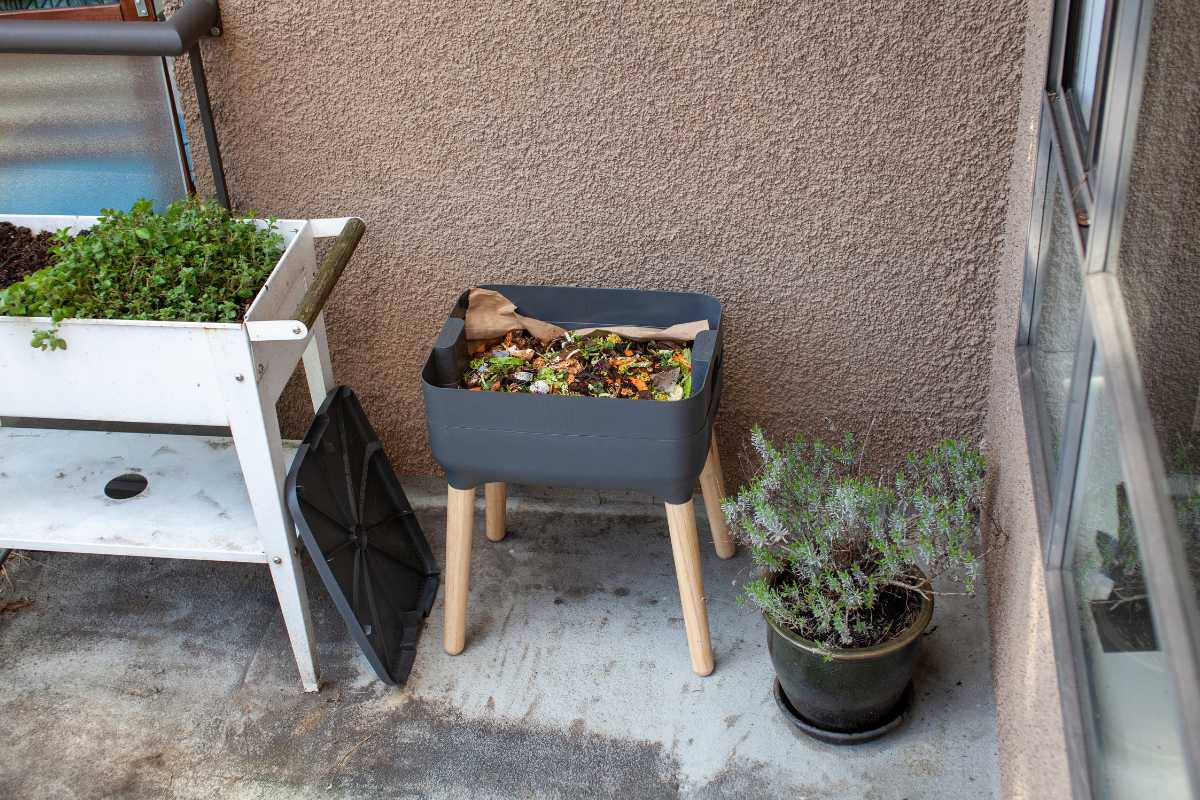
Compost bins come in many sizes, depending on how much waste you expect to put into them. Make sure yours is large enough to hold what you throw away.
Don’t worry about taking up too much space if you have more than you need right now. Just make sure there’s plenty of room for any future growth.
Design and Style
There are lots of different types of bins available with different designs to fit different home decors. Pick a style that fits where you’re planning to put the worm composter, indoors or outdoors.
No matter the design, your bins should be sturdy enough to hold whatever you throw into them without collapsing.
How to Prevent Fruit Flies When Vermicomposting Indoors
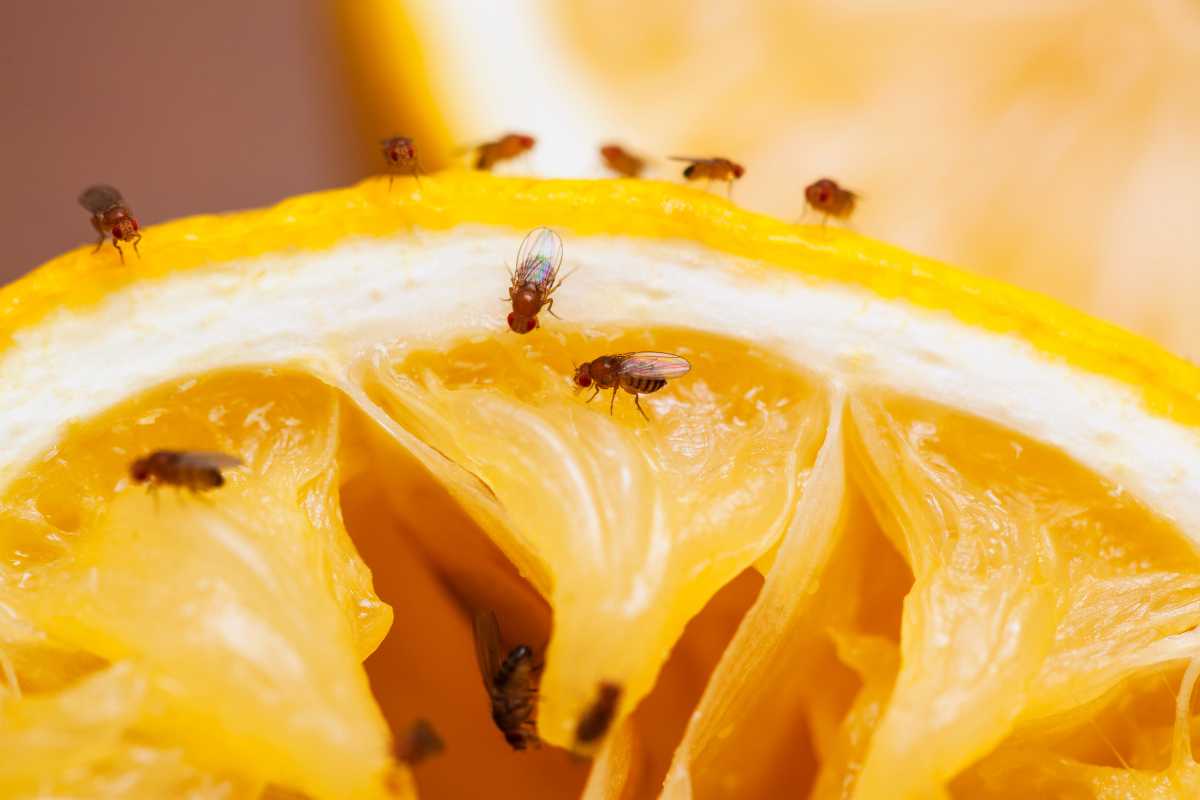
Fruit flies are a common annoyance when composting, but it’s not something that can’t be dealt with.
Freezing your waste before putting it into the bin will help prevent a fruit fly infestations. The freezing temperatures will help kill any fruit fly eggs that have been laid.
Put a layer of bedding on top of the food waste before putting it into the bin. If the food is buried deeper, the fruit flies won’t be able to find it and there’ll be fewer flies around.
Having carnivorous plants around or setting up homemade traps will also work. You can use a fruit fly trap jar that’s partially filled with apple cider vinegar.
Apple cider vinegar is toxic to most insects, including fruit flies. Dish soap breaks the surface tension of water and makes it easier for the fruit flies to float away. Putting a piece of paper or plastic wrap inside the jar prevents them from flying back up again.
How to Prevent Smells When Vermicomposting Indoors
Worms will usually eat the food waste before they start smelling bad, that’s why worm bins are usable indoors. Here are some tips to prevent bad odors from the worm composter bin.
You should never feed your worms too much food or feed them too fast. Wait until the worm food is mostly gone before adding more food. You can freeze excess food first, which will also help avoid fruit flies.
Worms are most active around 60 degrees Fahrenheit. If you keep your worm bin around this temperature, the worms will keep eating. Anything outside of the 55-70°F temperature range will result in slower-eating worms.
Worms can get sluggish if fed foods that they dislike. Foods such as meat, oil, fat, and dairy are hard for the worms to digest, and should be kept out of the worm bin. Food that isn’t liked by the worms may go bad before they eat it. If you see that the worms aren’t eating any of your food, remove it and don’t feed it again.
Read more about composting meat and dairy as compost ingredients.
Worms crawl up the side of the bin because they feel uncomfortable. You should check the environment of your bin regularly. Make sure that the bin isn’t too wet, dry, or acidic.
Best Worm Composter Final Thoughts
All in all, I think that worm composting is a great idea. It’s easy to set up and maintain, requires no electricity, and produces a nutrient-rich soil that is ideal for growing plants.
It’s also good for the environment because it uses less energy than traditional methods.
So if you’re looking for a more sustainable solution to your gardening needs, then worm composting is definitely worth a shot.
Learn more about composting and vermicomposting with these other articles:
- Vermicomposting Step-by-Step Guide
- Top Composting Tips from Experts
- Compost vs Humus – What’s the Difference?
- How to Shred Cardboard for Composting
- Do Earthworms Lay Eggs?
Worm Composter FAQs
What is the best container for worms?
Worms love to live in moist environments, so they prefer a container that can contain some moisture. Worms also enjoy living in dark places, so make sure your container is out of the way of direct sunlight. Containers made from rubber or plastic tend to work better than those made from wood.
Is a compost bin or worm farm better?
A compost bin is a great way to recycle kitchen scraps into rich organic fertilizer for your garden. Worm farms are similar to compost bins, but worms turn the waste into nutrient-rich castings. Both methods work well, but each has their own advantages and disadvantages. Worm farms can be easier to maintain and used indoors. Compost bins will usually need outdoor space due to the smell, but it can be cheaper.
What is the best type of worm farm?
The best type of worm farm is one that is stackable and allows for expansion as your need to compost more waste grows. It’s easier to add more vertical space with extra trays and worms, compared to adding more horizontal space outdoors to make a compost pile larger.
Can you put moldy bread in worm compost?
Yes, you can certainly put moldy bread into worm compost. Worms love it. Worms eat this stuff up and turn it into rich fertilizer. Worms are beneficial because they help decompose organic waste and release nutrients back into the environment.







